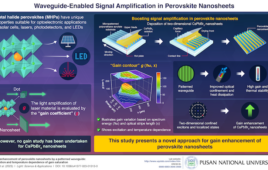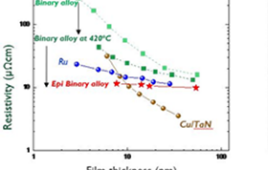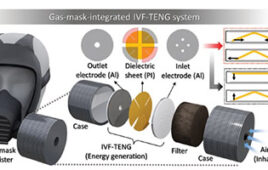
Scientists created an “ink” for marking surgery targets on the skin by combining a polymer (left) with fluorescence supramolecular nanoparticles (right). (Credit: Jin-sil Choi/ Hsian-Rong Tseng)
Now you can use tattoos for more than just artistic self-expression.
Physicians have been using tattoos on patients to mark an area for future treatment—especially for non-melanoma skin cancer, such as basal cell carcinoma. However, the ink could be troublesome.
“Commercially available tattoo pigments possess several issues, which include causing poor cosmesis, being mistaken for a melanocytic lesion, requiring additional removal procedures when no longer desired, and potentially inducing inflammatory responses,” according to a study published in ACS Nano.
But now scientists have developed a better option—a new ink that glows only under certain light conditions and can disappear altogether after a period of time.
People diagnosed with skin cancer usually have to wait up to three months between a biopsy confirming their condition and treatment. Physicians can mark the spot for potential future treatment using carbon graphite, India ink or fluorescent dye. These pigments, however, permanently color the skin and might require surgical or laser removal post-surgery. Those inks could also cause inflammation and discomfort at the site of the tattoo. Kai Chen, Gary Chuang, Hsian-Rong Tseng and other colleagues set out to create a safer, more patient-friendly solution.
“The idea came to me in my daily clinical practice, I’m a Mohs surgeon and I treat skin cancers day in and day out,” Chuang, a board-certified dermatologist at UCLA-Redondo Beach, told R&D Magazine in an exclusive interview.
According to Chuang, surgical sites can be difficult to identify, especially when done by experts and they can leave scars. Although photos are helpful, they can be inadequate due to poor lighting, angle and clarity of the photo. Although Chuang used permanent tattoos in the past to identify a surgical site, it left permanent marks.
As a result, Chuang and colleagues created a time-limited pigment by cross-linking fluorescent supramolecular nanoparticles. Under natural lighting, the nanoparticles are unseen, which would prevent unwanted markings on a patent’s skin. The pigment, however, glows under light shining at a wavelength of 465 nanometers, so doctors can use a special light to see the dye. Testing in rodents revealed that tattoos developed with these nanoparticles didn’t cause inflammation and lasted for three months. This time is long enough to mark a spot from biopsy until treatment for a non-melanoma patient.
“When I approached Dr. Tseng about the idea of bio-absorbable fluorescent tattoo, he was intrigued. This is an example of products that have a clinical need and are fulfilled by innovative technology from the benchtop,” Chuang added.
While the testing started in mice, the team is in the process of conducting an IRB (institutional review board) study for human use.
Chuang said he hopes this method goes beyond dermatology and could one day be available for patients undergoing radiation treatment as well.
“These tattoos are easily incorporated into current procedures. No additional procedures are needed for the placement of these tattoos,” he concluded.




